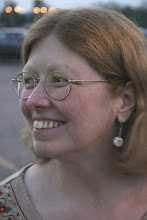
Lee Maynard’s latest book is his best yet. Described as “autobiographical fiction” by West Virginia University Press, it is a road trip that is part interior journey and part physical exploration of the landscape – West Virginia’s hills and hollers, the Sea of Cortez, the desert of New Mexico, and the arctic tundra. Opening with Maynard’s birth in 1936 in the parlor of his grandmother’s home, very short chapters polished like gems cover most of his lifetime between 1941 and 2005.
I immediately connected with the childhood chapters, feeling a kinship in the way that I do with so many Appalachian writers – and those from West Virginia in particular. The best writers have a way of making us think about our own lives through their stories, and the early chapters of The Pale Light of Sunset had me thinking about my own growing up on Jacks Mountain in central Pennsylvania. Maynard’s chapters are short in length, but long on thought – for both the writer and the reader.
Fellow West Virginia writers give The Pale Light of Sunset high praise. Ann Pancake describes the chapters “Arrow in the Light” and “A Death in the Mountains” as “miniature masterpieces” that “chilled my skin in awe.” Richard Currey describes the stories as “infused with a wanderer’s soul” and calls the book a “narrative of the mind and spirit for our own time.” Meredith Sue Willis describes the book as a “fictional memoir – a kind of heightened and imagined life” and says “Lee Maynard writes better than anyone else I know about how a boy is infused with the rules of American manhood.”
I had the good luck of hearing Lee Maynard read in 2003 at the Quiet Storm in Pittsburgh, as he and friend Chuck Kinder set out on their “Outlaw Writers Tour” along with the alt-country band The Deliberate Strangers. Both had new books out: Maynard’s Screaming with the Cannibals and Kinder’s The Last Mountain Dancer.
Maynard had already achieved notoriety with his first book, Crum, which was pretty much banned in his home state of West Virginia. In fact, Tamarack slapped “Adult Content” stickers on two of my favorite books which I bought there after finding them shelved low and in a very dark corner: Chuck Kinder’s Mountain Dancer and Keith Maillard’s Gloria. When I met Keith Maillard a few years back and asked him to sign that copy, he was startled by the neon green adult content sticker slapped on the cover, and gasped “What’s this?” I explained about where I’d bought it and told him not to worry because he was in very good company on that bottom corner bookshelf. When I asked Chuck if he was offended by Tamarack’s actions, he said he’d be offended if they hadn’t put a sticker on his book.
But back to Lee Maynard’s new book. The foreword “I’m still here, Lowenstein, you son of a bitch” intrigued me and by the end of the first chapter “The Pa
 rlor” which was barely three pages long, he’d totally hooked me. At times I wanted to savor a particular chapter by putting the book aside and losing myself in thoughts about it, but the momentum of the story propelled me to the next chapter and I could not put the book down for long. I connected most with the early childhood chapters and the later chapters. The rowdy and bawdy young manhood years were interesting and surreal with film noir shadings, and they worked well to make the later chapters all the more poignant. By the end – all the rivers crossed, all the running away from and toward something, all the small details as simple and significant as a treasured button – all those short chapters covering a lifetime of decades add up to one hell of a story.
rlor” which was barely three pages long, he’d totally hooked me. At times I wanted to savor a particular chapter by putting the book aside and losing myself in thoughts about it, but the momentum of the story propelled me to the next chapter and I could not put the book down for long. I connected most with the early childhood chapters and the later chapters. The rowdy and bawdy young manhood years were interesting and surreal with film noir shadings, and they worked well to make the later chapters all the more poignant. By the end – all the rivers crossed, all the running away from and toward something, all the small details as simple and significant as a treasured button – all those short chapters covering a lifetime of decades add up to one hell of a story.One of my favorite chapters, “1948: My Mother’s Coat” is about grasping the sense of loss. After running away for the day, Maynard returns home in the evening to find his mother gone: “I charge through the small rooms, breathing the scent of her, knowing that she has been here, waiting for me. There is no fire in the stove and the house is chilled. She is gone. Without her, the house has no meaning.” Another favorite chapter late in the book, “2003: Where I’m From,” is about the images that come to mind as the essence of the West Virginia landscape.
On the page following the dedication, there is a wonderful quote by Lee’s good friend Chuck Kinder: “All Stories are true, if they are well written. The question is what they are telling the truth about.” The stories in The Pale Light of Sunset are truths that I will carry with me for a very long time.
Additional Links:
You can see and hear Lee Maynard talk about The Pale Light of Sunset in this WVU Press podcast.
Cat Pleska interviews Lee Maynard at West Virginia Writers, Inc. which is also available as a podcast.




No comments:
Post a Comment